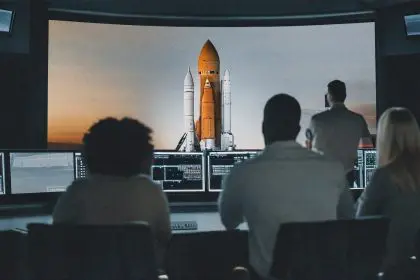In an era dominated by screens, children’s leisure time often revolves around digital devices. Yet, during this digital wave, the enduring value of introducing kids to libraries persists. Despite the allure of technology, libraries retain their pivotal role in shaping young minds. They’re not just book repositories but vibrant spaces that fuel education, curiosity and enjoyment. In fact, they remain unrivaled in their ability to ignite a passion for reading and offer a haven for exploration and discovery. These timeless institutions stand as beacons of learning, providing a treasure trove of benefits that hold an irreplaceable position in a child’s holistic development. As the world evolves, the essence of libraries in nurturing young intellects and fostering a lifelong love for learning remains unwavering, a testament to their timeless relevance in the digital age.
Why libraries matter
Libraries serve as more than repositories of books. They are vibrant spaces designed to spark imagination, encourage learning and cultivate a love for literature. When kids are introduced to libraries, they step into a world filled with endless possibilities.
1. A gateway to the world of books
At the heart of any library lies a vast collection of books catering to various interests and reading levels. From picture books that entice toddlers to gripping novels for young adults, libraries house a diverse array of literature. Introducing children to this treasure trove opens doors to new worlds, cultures and perspectives, expanding their horizons beyond their immediate surroundings.
2. Nurturing curiosity and lifelong learning
Libraries are hubs of knowledge where children can explore topics beyond their school curriculum. Whether it’s through educational programs, workshops or access to digital resources, these spaces encourage a thirst for knowledge. By fostering curiosity and a love for learning, libraries equip kids with the tools they need for lifelong education.
3. Developing critical skills
Beyond the books, libraries provide an environment conducive to developing critical skills. Kids learn the art of research, how to navigate information and discern credible sources — a crucial skill in today’s information age. Moreover, libraries often offer interactive sessions, storytelling events and educational games that enhance cognitive abilities and social skills.
4. Fostering a sense of community
Libraries serve as community hubs where families come together. From storytelling hours for toddlers to book clubs for teens, these spaces foster a sense of belonging and community engagement. They create opportunities for social interaction, helping kids build friendships and connections beyond their immediate circle.
5. Encouraging a love for reading
Introducing children to libraries instills a love for reading, an invaluable gift that transcends time. By exposing kids to different genres and authors, libraries help them discover their preferences, fostering a habit of reading for pleasure rather than obligation.
Making the Most of Library Visits
To maximize the benefits of introducing kids to libraries, parents and educators can take proactive steps:
– Lead by example: Let children see you reading and enjoying books. Be an advocate for the library experience.
– Engage with librarians: Librarians are invaluable resources. Seek their guidance in selecting age-appropriate books and activities tailored to your child’s interests.
– Make it an adventure: Encourage kids to explore different sections of the library, participate in events and borrow books that intrigue them.
Introducing kids to libraries remains paramount in their educational journey. Beyond being repositories of books, libraries foster a love for learning, nurture curiosity and create a sense of community. These invaluable spaces lay the foundation for a lifelong relationship with knowledge and literature, shaping young minds in profound ways.
So, take that step. Lead your child into the welcoming embrace of a library. You might just be setting them on a path of endless discovery and joyous exploration.
This story was created using AI technology.

















